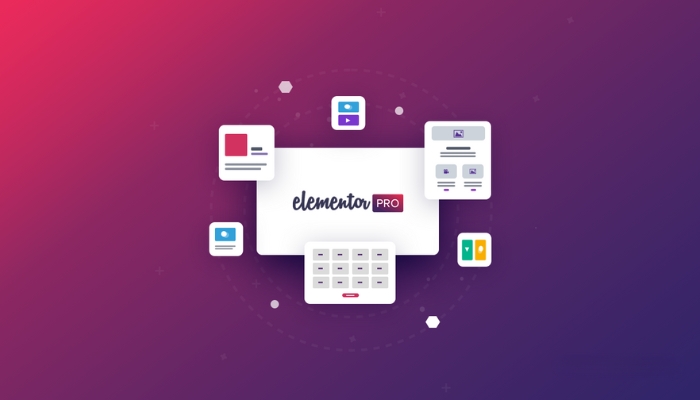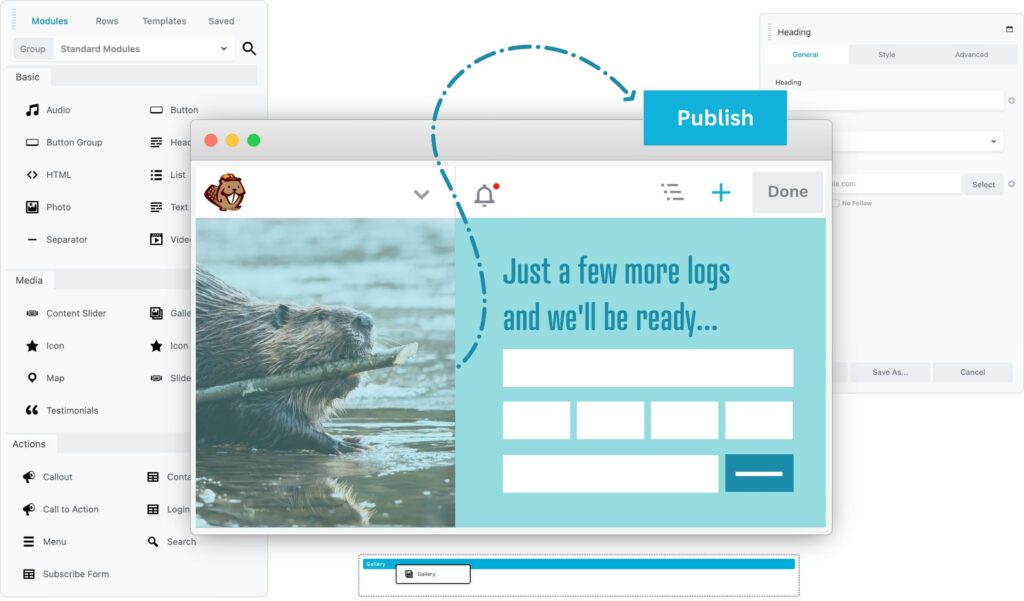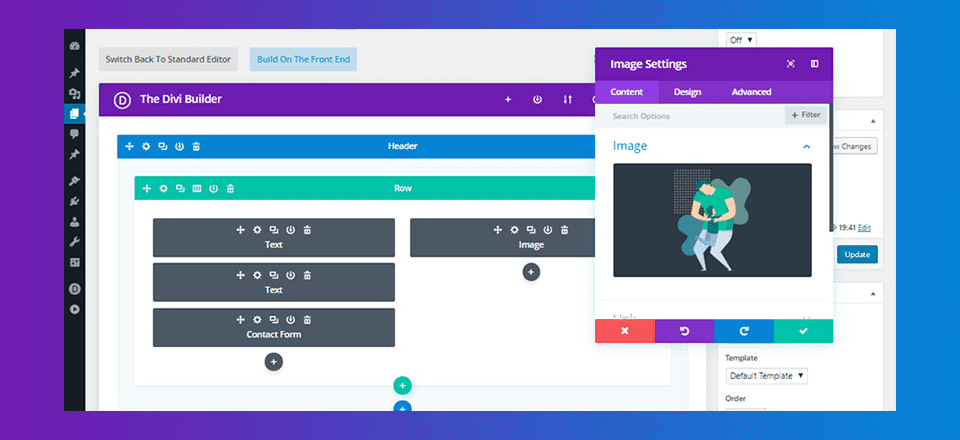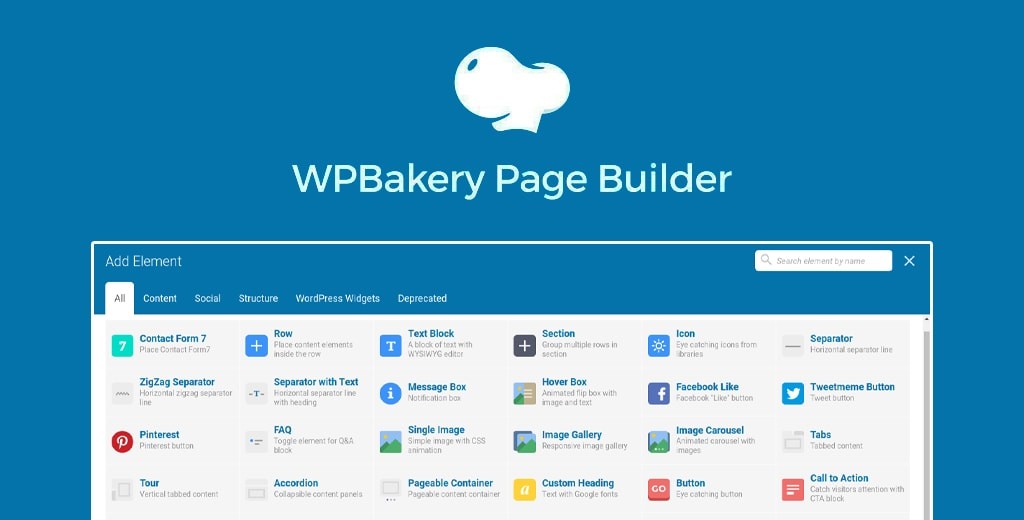Introduction to WordPress Page Builders
What are Page Builders?
Page builders are plugins that allow you to create, edit, and customize your website’s layout without needing to write any code. These tools use a drag-and-drop interface, making web design accessible to everyone, from beginners to experienced developers.
Why Use Page Builders?
Page builders simplify the process of website creation, enabling users to craft professional-looking sites quickly and efficiently. They offer pre-designed templates, intuitive interfaces, and powerful customization options. By using page builders, you can save time and reduce costs while achieving stunning results.
Getting Started with Page Builders
Choosing the Right Page Builder
Selecting the right page builder depends on your specific needs and preferences. Consider factors like ease of use, available features, compatibility with your theme, and pricing. Popular options include Elementor, Beaver Builder, Divi Builder, and WPBakery Page Builder.
Installation and Setup
Installing a page builder is straightforward. You can find these plugins in the WordPress repository or purchase them from their respective websites. Once installed, activate the plugin and follow the setup wizard to get started. Most page builders offer comprehensive tutorials and support to help you along the way.
Also Read: Elegant Themes Review 2024: What You Need to Know Before You Buy
Elementor: The Game Changer

Key Features of Elementor
Elementor stands out for its powerful drag-and-drop interface, extensive template library, and real-time editing capabilities. You can see changes instantly as you make them, which speeds up the design process and ensures precision.
How to Use Elementor?
Building Your First Page
To start, create a new page in WordPress and click “Edit with Elementor.” You’ll be taken to the Elementor editor, where you can drag and drop widgets to build your layout. Add elements like text, images, and buttons, and customize their appearance using the settings panel.
Advanced Tips
For more advanced customization, explore Elementor’s features like motion effects, custom CSS, and integrations with other plugins. These tools allow you to create dynamic, interactive pages that stand out.
Beaver Builder: The Reliable Choice

Key Features of Beaver Builder
Beaver Builder is known for its front-end editing, which provides a true “what you see is what you get” experience. Its responsive design capabilities ensure your site looks great on all devices.
How to Use Beaver Builder?
Step-by-Step Guide
After installing Beaver Builder, create a new page and launch the builder. Use the drag-and-drop interface to add rows, columns, and modules. Customize each element through the settings panel, adjusting styles, adding animations, and more.
Best Practices
Utilize Beaver Builder’s templates to jumpstart your design process. Save your custom layouts for reuse, and leverage the global settings to maintain consistency across your site.
Also Read: Eco-Friendly Websites: Sustainability Plugins for Conscious Creators
Other Noteworthy Page Builders
Divi Builder

Unique Selling Points
Divi Builder by Elegant Themes is renowned for its flexibility and robust design options. With a visual editor and a vast array of modules, you can create virtually any layout imaginable.
User Experience
Users appreciate Divi’s intuitive interface and powerful customization tools. The Divi community is active and supportive, offering plenty of tutorials and resources.
WPBakery Page Builder

Standout Features
WPBakery Page Builder, formerly known as Visual Composer, is a popular choice due to its extensive element library and compatibility with many themes. It offers both front-end and back-end editing options, catering to different user preferences.
Ease of Use
WPBakery’s interface is user-friendly, making it accessible for beginners. Its wide range of pre-designed templates helps users create beautiful pages quickly.
Comparing Page Builders
Performance
Speed
Page builders can impact site speed, but modern builders like Elementor and Beaver Builder are optimized for performance. Choosing lightweight themes and optimizing images can further enhance speed.
Reliability
Reliability varies among page builders. Elementor and Beaver Builder are known for their stability and regular updates. Choosing a reputable builder ensures fewer bugs and better support.
Ease of Use
Learning Curve
Elementor is often praised for its ease of use, even for beginners. Beaver Builder also offers a straightforward interface. Both provide extensive documentation and tutorials.
User Interface
A clean, intuitive interface is crucial. Elementor’s real-time editing and Beaver Builder’s front-end editing offer excellent user experiences. WPBakery’s dual editing modes cater to different preferences.
Pricing
Cost Comparison
Pricing varies among builders. Elementor offers a free version with premium plans starting at $49/year. Beaver Builder starts at $99/year, and Divi Builder is available for $89/year or $249 for lifetime access.
Value for Money
Consider the features you need and your budget. Elementor’s free version is powerful, while Beaver Builder and Divi Builder offer robust options for their price.
Also Read: 11 Best WordPress Alternatives That Will Blow Your Mind in 2024!
Tips for Effective Page Building
Planning Your Layout
Understanding Your Audience
Before you start, know your audience. Design with their needs and preferences in mind to create a more engaging experience.
Structuring Your Content
A well-structured layout enhances readability and user engagement. Use headings, subheadings, and whitespace effectively.
Using Templates Effectively
Customizing Templates
Templates save time but should be customized to reflect your brand. Adjust colors, fonts, and images to make them your own.
Saving Your Own Templates
Save custom layouts as templates for future use. This helps maintain consistency and speeds up the design process for new pages.
Common Mistakes to Avoid
Overloading with Elements
Keeping It Simple
Avoid cluttering your pages with too many elements. Focus on essential components that serve a clear purpose.
Focusing on Essential Elements
Prioritize elements that enhance user experience and convey your message effectively. Less is often more.
Ignoring Mobile Optimization
Importance of Mobile-Friendly Design
With the rise of mobile browsing, ensure your site is responsive. Page builders like Elementor and Beaver Builder offer tools for mobile optimization.
Tools for Testing
Use tools like Google’s Mobile-Friendly Test to check your site’s responsiveness. Regularly test your design on different devices.
Best Practices for SEO with Page Builders
Optimizing Images
Compressing Images
Large images can slow down your site. Use tools like TinyPNG to compress images without losing quality.
Using Alt Text
Alt text improves accessibility and SEO. Describe your images accurately to enhance search engine understanding.
Using Headings Correctly
Hierarchical Structure
Use headings (H1, H2, H3) to organize content logically. **This improves readability and helps search engines understand your content
Keyword Usage
Integrate keywords naturally within your headings to boost SEO. Avoid keyword stuffing and focus on relevance.
Case Studies: Success Stories
Business Websites
Real-World Examples
Businesses like XYZ Corporation have successfully used Elementor to revamp their websites, resulting in improved user engagement and higher conversion rates.
Results Achieved
These companies saw significant growth in traffic and sales, showcasing the power of effective page building.
Personal Blogs
Creative Uses
Bloggers like Jane Doe have utilized Beaver Builder to create unique, visually appealing blogs that attract more readers and followers.
Growth in Traffic
By optimizing their layouts and improving user experience, these bloggers experienced substantial increases in traffic and audience engagement.
Conclusion
Summary
Page builders like Elementor, Beaver Builder, Divi Builder, and WPBakery Page Builder offer powerful tools for creating stunning, customized websites without coding. They simplify the design process, making it accessible to everyone.
Final Thoughts
Choosing the right page builder depends on your specific needs and preferences. Experiment with different builders to find the one that suits you best. Remember, a well-designed website can significantly enhance user experience and drive success.
Also Read: 11 Premium WordPress Plugins That Will Change the Way You Manage Your Site
FAQs
What are the benefits of using a page builder?
Page builders make website creation easy, fast, and accessible. They offer drag-and-drop interfaces, pre-designed templates, and powerful customization options.
Are page builders suitable for beginners?
Yes, page builders like Elementor and Beaver Builder are designed to be user-friendly, even for those with no coding experience. They provide tutorials and support to help you get started.
How do page builders impact site speed?
While page builders can affect site speed, modern builders are optimized for performance. Using lightweight themes and optimizing images can help maintain fast loading times.
Can I switch page builders easily?
Switching page builders can be challenging because each builder uses its own set of shortcodes and elements. It’s best to choose a builder you’re comfortable with from the start.
Do page builders work with all WordPress themes?
Most page builders are compatible with a wide range of WordPress themes. However, it’s important to check compatibility before committing to a builder.

